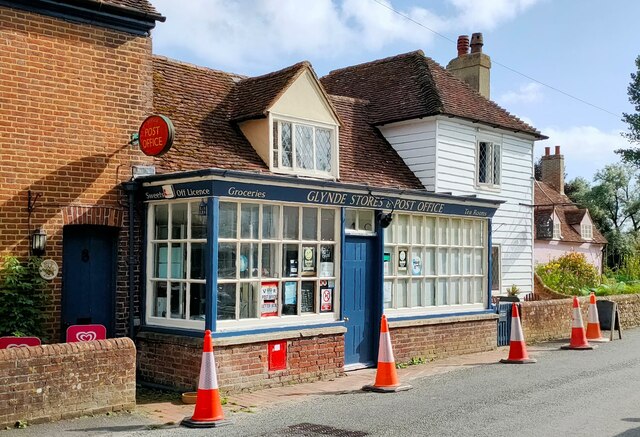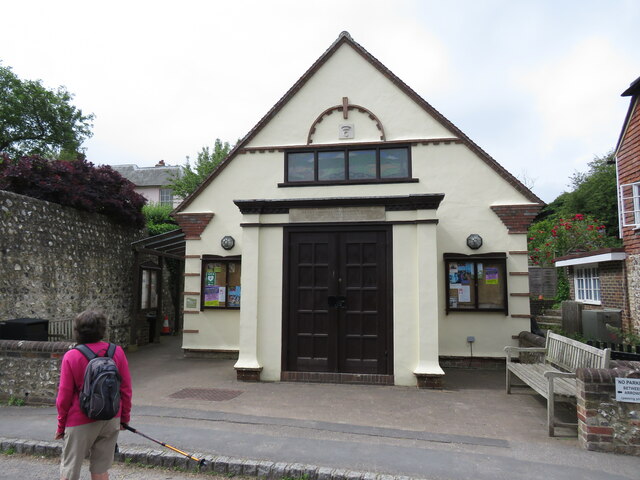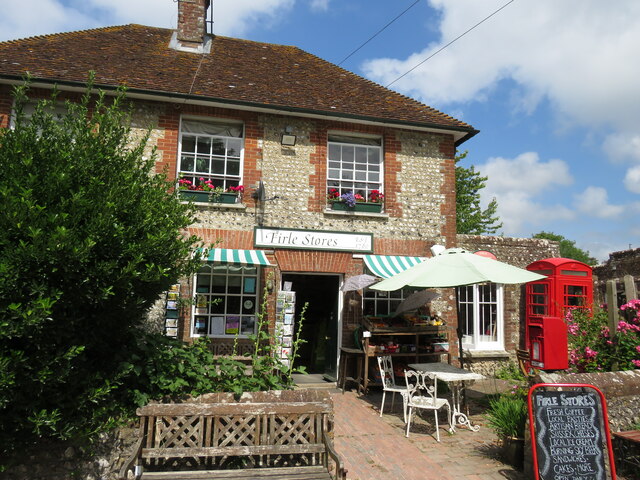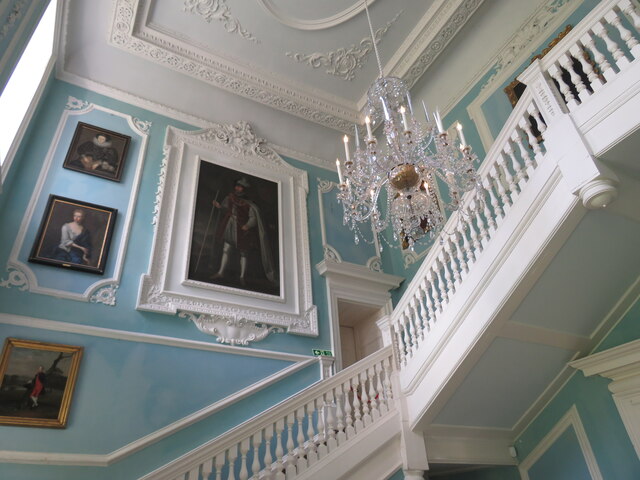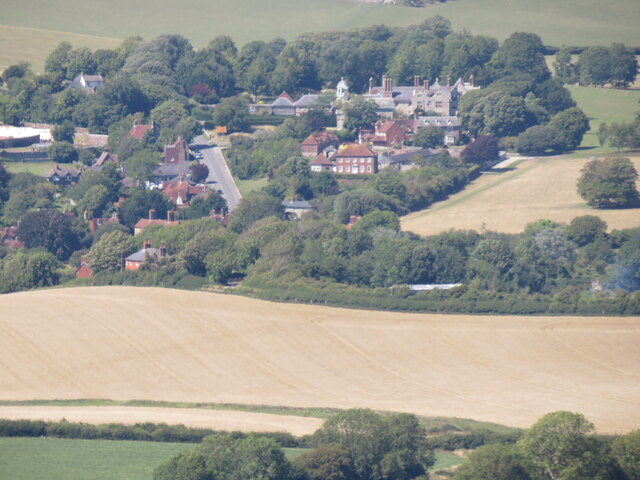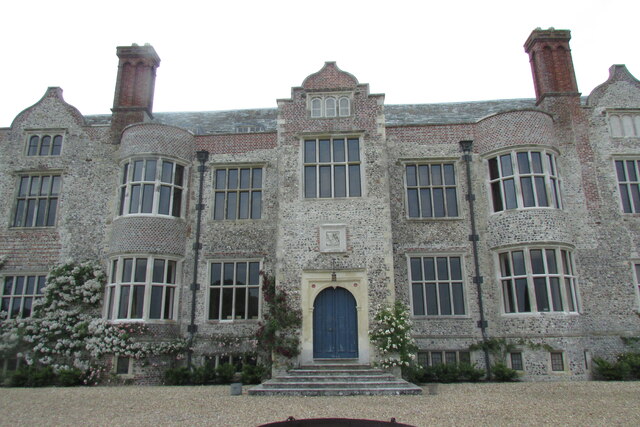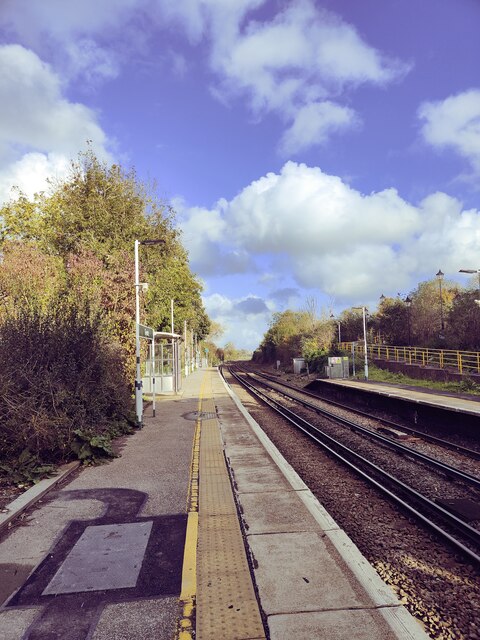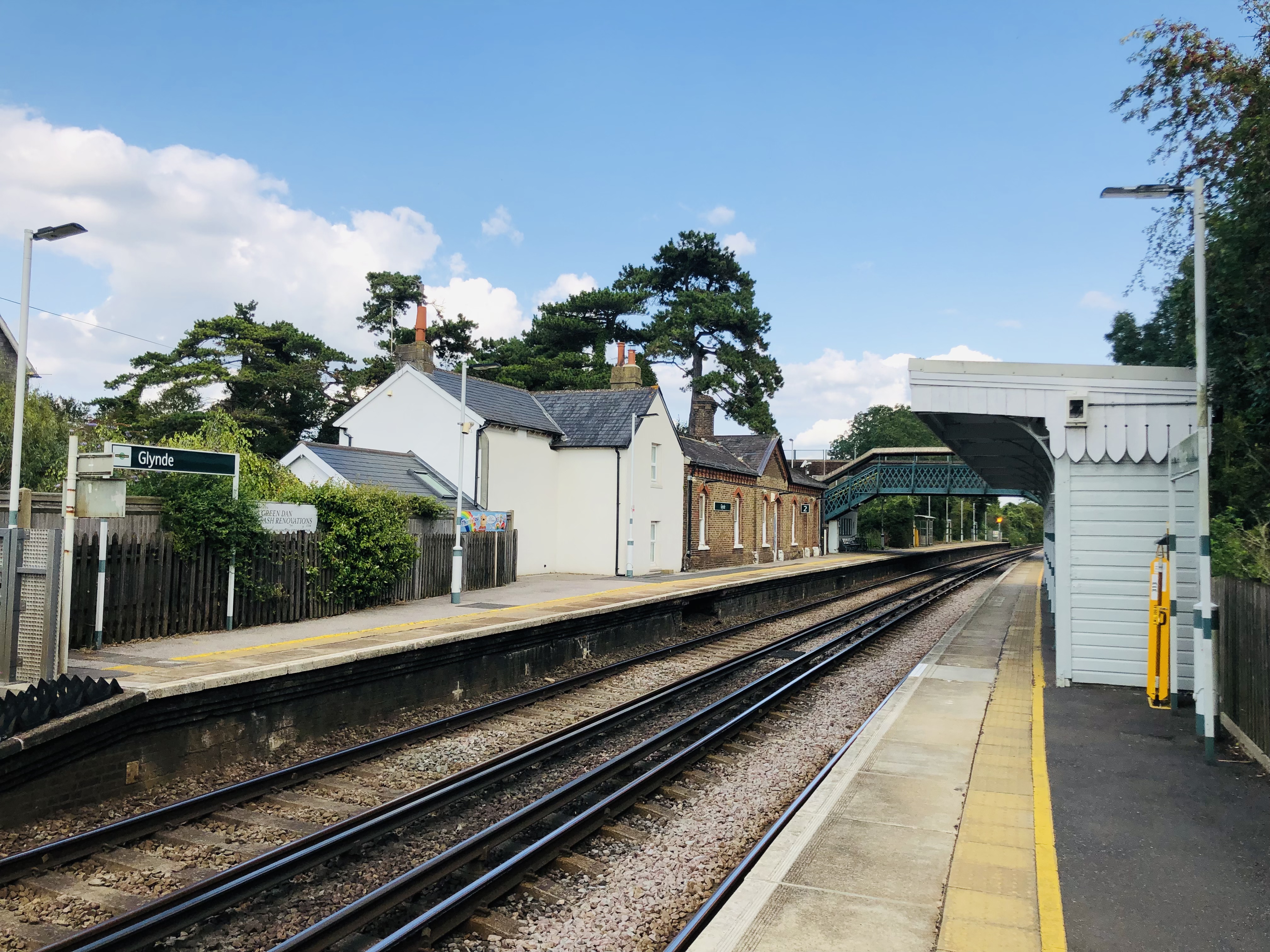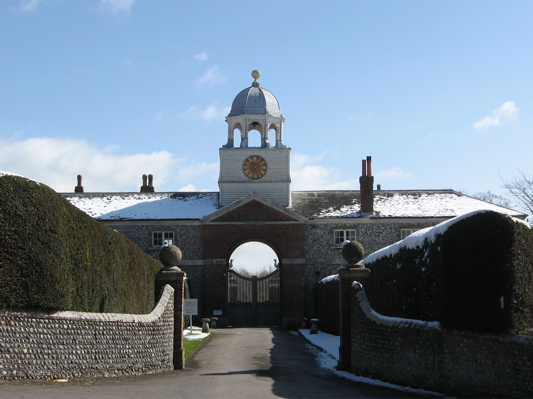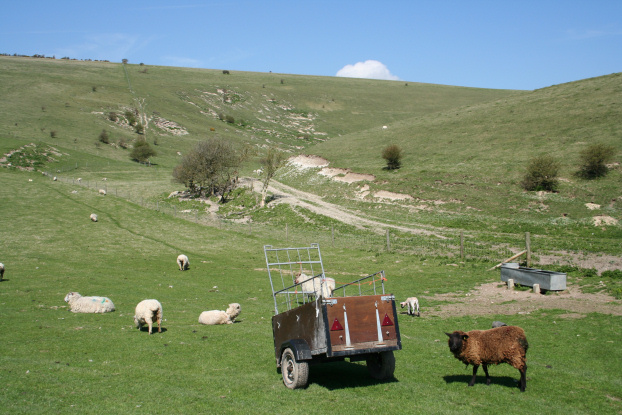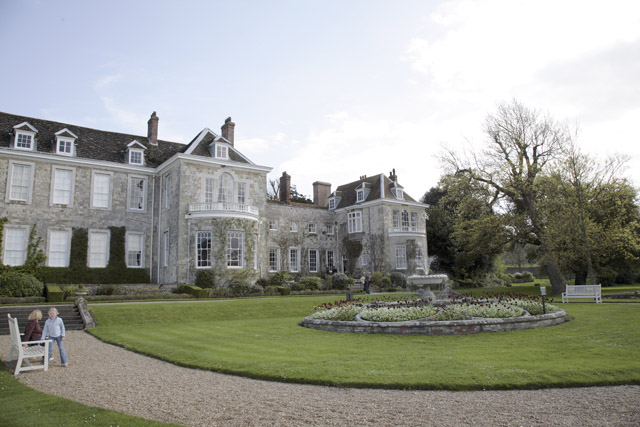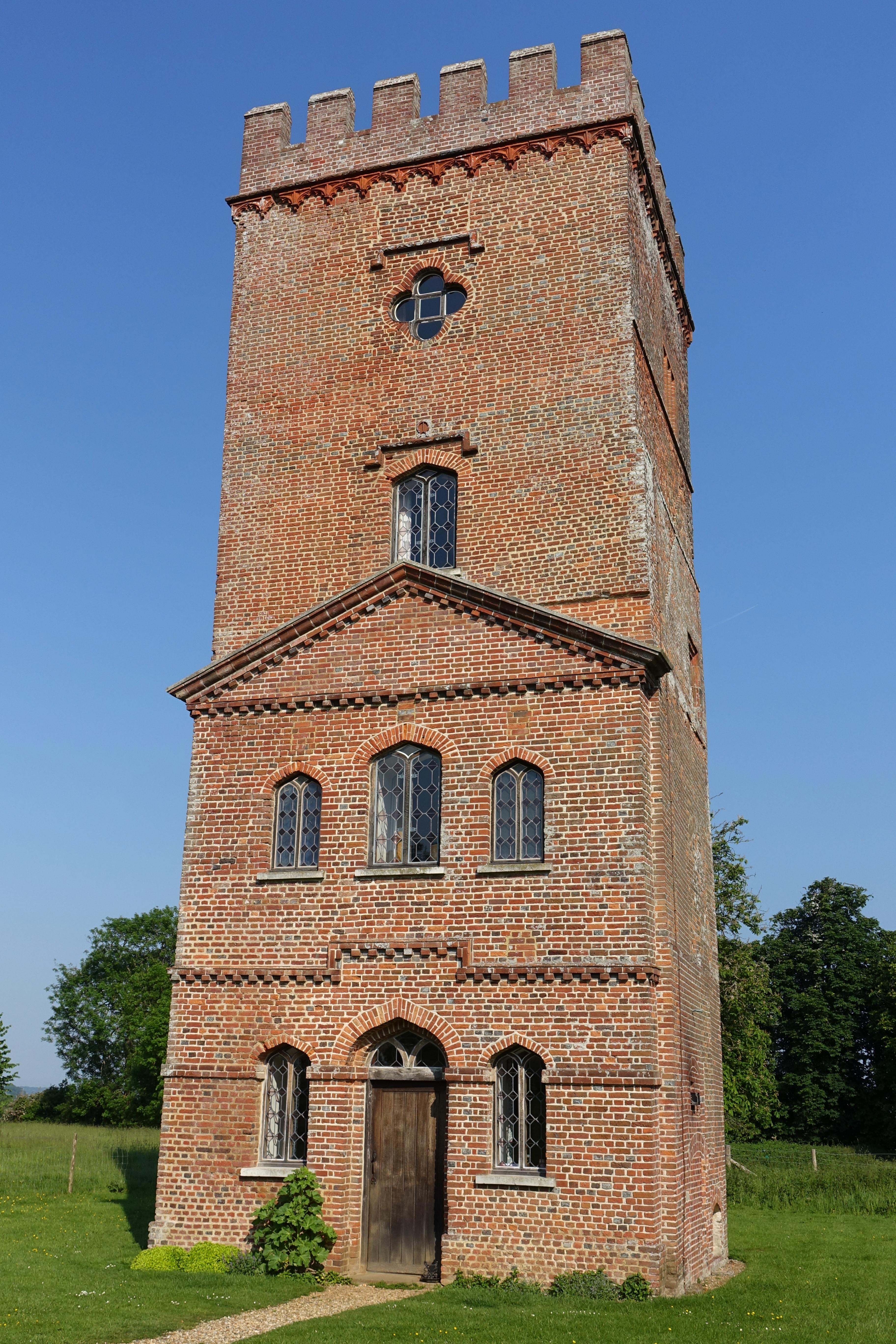Burgh Shaw
Wood, Forest in Sussex Lewes
England
Burgh Shaw
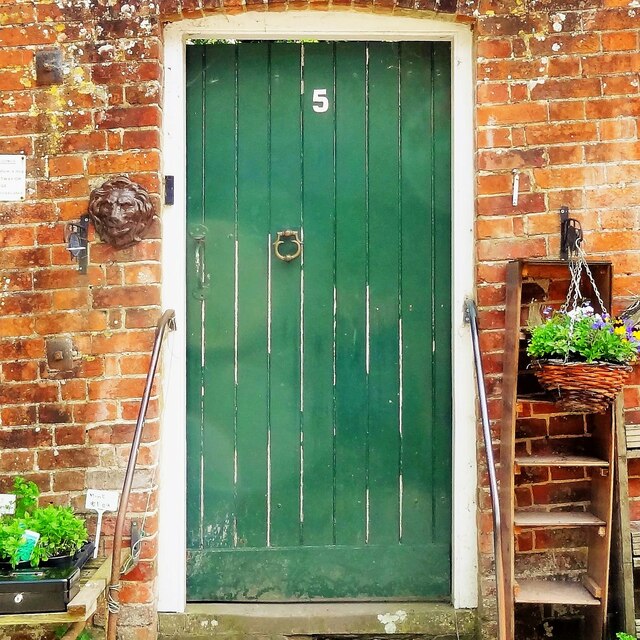
Burgh Shaw, located in Sussex, England, is a picturesque woodland known for its natural beauty and tranquil atmosphere. Nestled within the larger Forest of Sussex, Burgh Shaw is a haven for nature enthusiasts and those seeking a peaceful retreat.
Covering an area of approximately 100 acres, Burgh Shaw is primarily composed of ancient woodlands, boasting a rich diversity of tree species such as oak, beech, and ash. The forest floor is adorned with a vibrant carpet of wildflowers and ferns, creating a stunning display of colors during the spring and summer months.
The forest is crisscrossed by a network of well-maintained trails, making it an ideal destination for walking, hiking, and cycling. These trails offer visitors the opportunity to explore the woods, discover hidden ponds, and observe a variety of wildlife, including deer, foxes, and numerous bird species.
Burgh Shaw holds significant historical and cultural importance. It has been used as a hunting ground for centuries, and remnants of old hunting lodges can still be found within its boundaries. The forest also played a role in the timber industry, with evidence of ancient charcoal platforms and saw pits scattered throughout the area.
Today, Burgh Shaw is managed by the Sussex Wildlife Trust, ensuring the preservation and conservation of its natural habitat. The trust organizes regular guided walks and educational programs, providing visitors with an opportunity to learn about the forest's biodiversity and the importance of sustainable conservation practices.
In conclusion, Burgh Shaw, Sussex, is a stunning woodland within the Forest of Sussex, offering visitors a chance to immerse themselves in nature, explore its trails, and learn about its historical significance. It is a true gem for both locals and tourists alike.
If you have any feedback on the listing, please let us know in the comments section below.
Burgh Shaw Images
Images are sourced within 2km of 50.861804/0.093357048 or Grid Reference TQ4709. Thanks to Geograph Open Source API. All images are credited.
![Glynde Place [1] From the car parking area, this grassy path leads through the gardens to the house.
The Glynde Place estate is situated at the top of the village of Glynde, some 2½ miles east of Lewes. The house was built in 1569 from local flint, chalk and Caen stone. The estate has 10 acres of garden and 74 acres of parkland. The house is listed, grade I, with details at: <span class="nowrap"><a title="https://historicengland.org.uk/listing/the-list/list-entry/1221546" rel="nofollow ugc noopener" href="https://historicengland.org.uk/listing/the-list/list-entry/1221546">Link</a><img style="margin-left:2px;" alt="External link" title="External link - shift click to open in new window" src="https://s1.geograph.org.uk/img/external.png" width="10" height="10"/></span> The grounds are on the Register of Historic Parks and Gardens. Grade II*, with much history and detail at:
<span class="nowrap"><a title="https://historicengland.org.uk/listing/the-list/list-entry/1000307" rel="nofollow ugc noopener" href="https://historicengland.org.uk/listing/the-list/list-entry/1000307">Link</a><img style="margin-left:2px;" alt="External link" title="External link - shift click to open in new window" src="https://s1.geograph.org.uk/img/external.png" width="10" height="10"/></span>](https://s1.geograph.org.uk/geophotos/07/22/39/7223997_32bfd076.jpg)
![Glynde Place [2] The house is seen from the approach path from the car park.
The Glynde Place estate is situated at the top of the village of Glynde, some 2½ miles east of Lewes. The house was built in 1569 from local flint, chalk and Caen stone. The estate has 10 acres of garden and 74 acres of parkland. The house is listed, grade I, with details at: <span class="nowrap"><a title="https://historicengland.org.uk/listing/the-list/list-entry/1221546" rel="nofollow ugc noopener" href="https://historicengland.org.uk/listing/the-list/list-entry/1221546">Link</a><img style="margin-left:2px;" alt="External link" title="External link - shift click to open in new window" src="https://s1.geograph.org.uk/img/external.png" width="10" height="10"/></span> The grounds are on the Register of Historic Parks and Gardens. Grade II*, with much history and detail at:
<span class="nowrap"><a title="https://historicengland.org.uk/listing/the-list/list-entry/1000307" rel="nofollow ugc noopener" href="https://historicengland.org.uk/listing/the-list/list-entry/1000307">Link</a><img style="margin-left:2px;" alt="External link" title="External link - shift click to open in new window" src="https://s1.geograph.org.uk/img/external.png" width="10" height="10"/></span>](https://s0.geograph.org.uk/geophotos/07/22/40/7224000_f05209ec.jpg)
![Glynde Place [3] The east front of the house.
The Glynde Place estate is situated at the top of the village of Glynde, some 2½ miles east of Lewes. The house was built in 1569 from local flint, chalk and Caen stone. The estate has 10 acres of garden and 74 acres of parkland. The house is listed, grade I, with details at: <span class="nowrap"><a title="https://historicengland.org.uk/listing/the-list/list-entry/1221546" rel="nofollow ugc noopener" href="https://historicengland.org.uk/listing/the-list/list-entry/1221546">Link</a><img style="margin-left:2px;" alt="External link" title="External link - shift click to open in new window" src="https://s1.geograph.org.uk/img/external.png" width="10" height="10"/></span> The grounds are on the Register of Historic Parks and Gardens. Grade II*, with much history and detail at:
<span class="nowrap"><a title="https://historicengland.org.uk/listing/the-list/list-entry/1000307" rel="nofollow ugc noopener" href="https://historicengland.org.uk/listing/the-list/list-entry/1000307">Link</a><img style="margin-left:2px;" alt="External link" title="External link - shift click to open in new window" src="https://s1.geograph.org.uk/img/external.png" width="10" height="10"/></span>](https://s3.geograph.org.uk/geophotos/07/22/40/7224003_5478c9f8.jpg)
![Glynde Place [4] The garden wall and gate piers were built in 1760. On one side the wall is faced with squared knapped flints with blind arches of red brick and gate piers of squared knapped flints edged with red brick. The other side of the wall is faced with cobbles and the gate piers are wholly of red brick. The piers are crowned with a lead figure of a wyvern. Listed, grade II*, with details at: <span class="nowrap"><a title="https://historicengland.org.uk/listing/the-list/list-entry/1043919" rel="nofollow ugc noopener" href="https://historicengland.org.uk/listing/the-list/list-entry/1043919">Link</a><img style="margin-left:2px;" alt="External link" title="External link - shift click to open in new window" src="https://s1.geograph.org.uk/img/external.png" width="10" height="10"/></span>
The Glynde Place estate is situated at the top of the village of Glynde, some 2½ miles east of Lewes. The house was built in 1569 from local flint, chalk and Caen stone. The estate has 10 acres of garden and 74 acres of parkland. The house is listed, grade I, with details at: <span class="nowrap"><a title="https://historicengland.org.uk/listing/the-list/list-entry/1221546" rel="nofollow ugc noopener" href="https://historicengland.org.uk/listing/the-list/list-entry/1221546">Link</a><img style="margin-left:2px;" alt="External link" title="External link - shift click to open in new window" src="https://s1.geograph.org.uk/img/external.png" width="10" height="10"/></span> The grounds are on the Register of Historic Parks and Gardens. Grade II*, with much history and detail at:
<span class="nowrap"><a title="https://historicengland.org.uk/listing/the-list/list-entry/1000307" rel="nofollow ugc noopener" href="https://historicengland.org.uk/listing/the-list/list-entry/1000307">Link</a><img style="margin-left:2px;" alt="External link" title="External link - shift click to open in new window" src="https://s1.geograph.org.uk/img/external.png" width="10" height="10"/></span>](https://s1.geograph.org.uk/geophotos/07/22/40/7224005_d61e403d.jpg)
![Glynde Place [5] The garden wall and gate piers were built in 1760. On one side the wall is faced with squared knapped flints with blind arches of red brick and gate piers of squared knapped flints edged with red brick. The other side of the wall is faced with cobbles and the gate piers are wholly of red brick. The piers are crowned with a lead figure of a wyvern. Listed, grade II*, with details at: <span class="nowrap"><a title="https://historicengland.org.uk/listing/the-list/list-entry/1043919" rel="nofollow ugc noopener" href="https://historicengland.org.uk/listing/the-list/list-entry/1043919">Link</a><img style="margin-left:2px;" alt="External link" title="External link - shift click to open in new window" src="https://s1.geograph.org.uk/img/external.png" width="10" height="10"/></span>
The Glynde Place estate is situated at the top of the village of Glynde, some 2½ miles east of Lewes. The house was built in 1569 from local flint, chalk and Caen stone. The estate has 10 acres of garden and 74 acres of parkland. The house is listed, grade I, with details at: <span class="nowrap"><a title="https://historicengland.org.uk/listing/the-list/list-entry/1221546" rel="nofollow ugc noopener" href="https://historicengland.org.uk/listing/the-list/list-entry/1221546">Link</a><img style="margin-left:2px;" alt="External link" title="External link - shift click to open in new window" src="https://s1.geograph.org.uk/img/external.png" width="10" height="10"/></span> The grounds are on the Register of Historic Parks and Gardens. Grade II*, with much history and detail at:
<span class="nowrap"><a title="https://historicengland.org.uk/listing/the-list/list-entry/1000307" rel="nofollow ugc noopener" href="https://historicengland.org.uk/listing/the-list/list-entry/1000307">Link</a><img style="margin-left:2px;" alt="External link" title="External link - shift click to open in new window" src="https://s1.geograph.org.uk/img/external.png" width="10" height="10"/></span>](https://s3.geograph.org.uk/geophotos/07/22/40/7224011_aa5369d4.jpg)
![Glynde Place [6] The stables were built in 1760 and consist of two buildings at right angles to each other, joined by a flanking wall. One of the buildings stands across the carriage drive. Constructed of squared knapped flint with red brick quoins. There is a central carriage arch in red brick. The roof is of slate, with a turret over the archway. Listed, grade I, with details at: <span class="nowrap"><a title="https://historicengland.org.uk/listing/the-list/list-entry/1221605" rel="nofollow ugc noopener" href="https://historicengland.org.uk/listing/the-list/list-entry/1221605">Link</a><img style="margin-left:2px;" alt="External link" title="External link - shift click to open in new window" src="https://s1.geograph.org.uk/img/external.png" width="10" height="10"/></span>
The Glynde Place estate is situated at the top of the village of Glynde, some 2½ miles east of Lewes. The house was built in 1569 from local flint, chalk and Caen stone. The estate has 10 acres of garden and 74 acres of parkland. The house is listed, grade I, with details at: <span class="nowrap"><a title="https://historicengland.org.uk/listing/the-list/list-entry/1221546" rel="nofollow ugc noopener" href="https://historicengland.org.uk/listing/the-list/list-entry/1221546">Link</a><img style="margin-left:2px;" alt="External link" title="External link - shift click to open in new window" src="https://s1.geograph.org.uk/img/external.png" width="10" height="10"/></span> The grounds are on the Register of Historic Parks and Gardens. Grade II*, with much history and detail at:
<span class="nowrap"><a title="https://historicengland.org.uk/listing/the-list/list-entry/1000307" rel="nofollow ugc noopener" href="https://historicengland.org.uk/listing/the-list/list-entry/1000307">Link</a><img style="margin-left:2px;" alt="External link" title="External link - shift click to open in new window" src="https://s1.geograph.org.uk/img/external.png" width="10" height="10"/></span>](https://s1.geograph.org.uk/geophotos/07/22/49/7224997_ec0437aa.jpg)
![Glynde Place [7] Part of the gardens.
The Glynde Place estate is situated at the top of the village of Glynde, some 2½ miles east of Lewes. The house was built in 1569 from local flint, chalk and Caen stone. The estate has 10 acres of garden and 74 acres of parkland. The house is listed, grade I, with details at: <span class="nowrap"><a title="https://historicengland.org.uk/listing/the-list/list-entry/1221546" rel="nofollow ugc noopener" href="https://historicengland.org.uk/listing/the-list/list-entry/1221546">Link</a><img style="margin-left:2px;" alt="External link" title="External link - shift click to open in new window" src="https://s1.geograph.org.uk/img/external.png" width="10" height="10"/></span> The grounds are on the Register of Historic Parks and Gardens. Grade II*, with much history and detail at:
<span class="nowrap"><a title="https://historicengland.org.uk/listing/the-list/list-entry/1000307" rel="nofollow ugc noopener" href="https://historicengland.org.uk/listing/the-list/list-entry/1000307">Link</a><img style="margin-left:2px;" alt="External link" title="External link - shift click to open in new window" src="https://s1.geograph.org.uk/img/external.png" width="10" height="10"/></span>](https://s2.geograph.org.uk/geophotos/07/22/49/7224998_de9dcbdd.jpg)
![Glynde Place [8] The carriage drive leading to the entrance from the road. Seen from the stables.
The Glynde Place estate is situated at the top of the village of Glynde, some 2½ miles east of Lewes. The house was built in 1569 from local flint, chalk and Caen stone. The estate has 10 acres of garden and 74 acres of parkland. The house is listed, grade I, with details at: <span class="nowrap"><a title="https://historicengland.org.uk/listing/the-list/list-entry/1221546" rel="nofollow ugc noopener" href="https://historicengland.org.uk/listing/the-list/list-entry/1221546">Link</a><img style="margin-left:2px;" alt="External link" title="External link - shift click to open in new window" src="https://s1.geograph.org.uk/img/external.png" width="10" height="10"/></span> The grounds are on the Register of Historic Parks and Gardens. Grade II*, with much history and detail at:
<span class="nowrap"><a title="https://historicengland.org.uk/listing/the-list/list-entry/1000307" rel="nofollow ugc noopener" href="https://historicengland.org.uk/listing/the-list/list-entry/1000307">Link</a><img style="margin-left:2px;" alt="External link" title="External link - shift click to open in new window" src="https://s1.geograph.org.uk/img/external.png" width="10" height="10"/></span>](https://s3.geograph.org.uk/geophotos/07/22/49/7224999_39e54a32.jpg)
![Parish church [1] The Anglican parish church of St Mary the Virgin was built in 1765. The entrance front is of knapped flint on an ashlar base with a pediment. The other walls are of cobbles on an ashlar base. The interior retains its original fittings. The gallery was inserted in 1841 and the chancel was repaired in 1894. Listed, grade II*, with details at: <span class="nowrap"><a title="https://historicengland.org.uk/listing/the-list/list-entry/1043918" rel="nofollow ugc noopener" href="https://historicengland.org.uk/listing/the-list/list-entry/1043918">Link</a><img style="margin-left:2px;" alt="External link" title="External link - shift click to open in new window" src="https://s1.geograph.org.uk/img/external.png" width="10" height="10"/></span>
The Glynde Place estate is situated at the top of the village of Glynde, some 2½ miles east of Lewes. The house was built in 1569 from local flint, chalk and Caen stone. The estate has 10 acres of garden and 74 acres of parkland. The house is listed, grade I, with details at: <span class="nowrap"><a title="https://historicengland.org.uk/listing/the-list/list-entry/1221546" rel="nofollow ugc noopener" href="https://historicengland.org.uk/listing/the-list/list-entry/1221546">Link</a><img style="margin-left:2px;" alt="External link" title="External link - shift click to open in new window" src="https://s1.geograph.org.uk/img/external.png" width="10" height="10"/></span> The grounds are on the Register of Historic Parks and Gardens. Grade II*, with much history and detail at:
<span class="nowrap"><a title="https://historicengland.org.uk/listing/the-list/list-entry/1000307" rel="nofollow ugc noopener" href="https://historicengland.org.uk/listing/the-list/list-entry/1000307">Link</a><img style="margin-left:2px;" alt="External link" title="External link - shift click to open in new window" src="https://s1.geograph.org.uk/img/external.png" width="10" height="10"/></span>](https://s2.geograph.org.uk/geophotos/07/22/50/7225002_26126d8d.jpg)
![Glynde Place [9] The view from the house, looking northeast.
The Glynde Place estate is situated at the top of the village of Glynde, some 2½ miles east of Lewes. The house was built in 1569 from local flint, chalk and Caen stone. The estate has 10 acres of garden and 74 acres of parkland. The house is listed, grade I, with details at: <span class="nowrap"><a title="https://historicengland.org.uk/listing/the-list/list-entry/1221546" rel="nofollow ugc noopener" href="https://historicengland.org.uk/listing/the-list/list-entry/1221546">Link</a><img style="margin-left:2px;" alt="External link" title="External link - shift click to open in new window" src="https://s1.geograph.org.uk/img/external.png" width="10" height="10"/></span> The grounds are on the Register of Historic Parks and Gardens. Grade II*, with much history and detail at:
<span class="nowrap"><a title="https://historicengland.org.uk/listing/the-list/list-entry/1000307" rel="nofollow ugc noopener" href="https://historicengland.org.uk/listing/the-list/list-entry/1000307">Link</a><img style="margin-left:2px;" alt="External link" title="External link - shift click to open in new window" src="https://s1.geograph.org.uk/img/external.png" width="10" height="10"/></span>](https://s0.geograph.org.uk/geophotos/07/22/50/7225004_a621cc80.jpg)
Burgh Shaw is located at Grid Ref: TQ4709 (Lat: 50.861804, Lng: 0.093357048)
Administrative County: East Sussex
District: Lewes
Police Authority: Sussex
What 3 Words
///myth.toned.superhero. Near Ringmer, East Sussex
Nearby Locations
Related Wikis
Glynde and Beddingham
Glynde and Beddingham Parish Council is a combined council of two civil parishes in the Lewes district of East Sussex. == Glynde == == Beddingham... ==
Glynde railway station
Glynde railway station serves Glynde in East Sussex. It is 53 miles 11 chains (85.5 km) from London Bridge, on the East Coastway Line and train services...
Glynde
Glynde is a village and shares a civil parish with Beddingham in the Lewes District of East Sussex, United Kingdom. It is located two miles (5 km) east...
St Mary's Church, Glynde
The Church of St Mary the Virgin is a Grade II* listed Anglican church in the village of Glynde in East Sussex. It was built in the 1760s by Richard Trevor...
Glynde Place
Glynde Place is an Elizabethan Manor House at Glynde in East Sussex, England. Situated in the South Downs National Park, it is the family home of the Viscounts...
Southerham Farm
Southerham Farm is a 131-hectare (320-acre) nature reserve on the eastern outskirts of Lewes in East Sussex. It is managed by the Sussex Wildlife Trust...
Firle Place
Firle Place is a Manor house in Firle, Sussex, United Kingdom. The Gage family have owned the land at Firle since acquiring it from the Levett family in...
Laughton Place
Laughton Place is a historic building near Lewes, Sussex owned by the Landmark Trust. The Pelham family bought Laughton Place, an old fortified manor,...
Have you been to Burgh Shaw?
Leave your review of Burgh Shaw below (or comments, questions and feedback).
